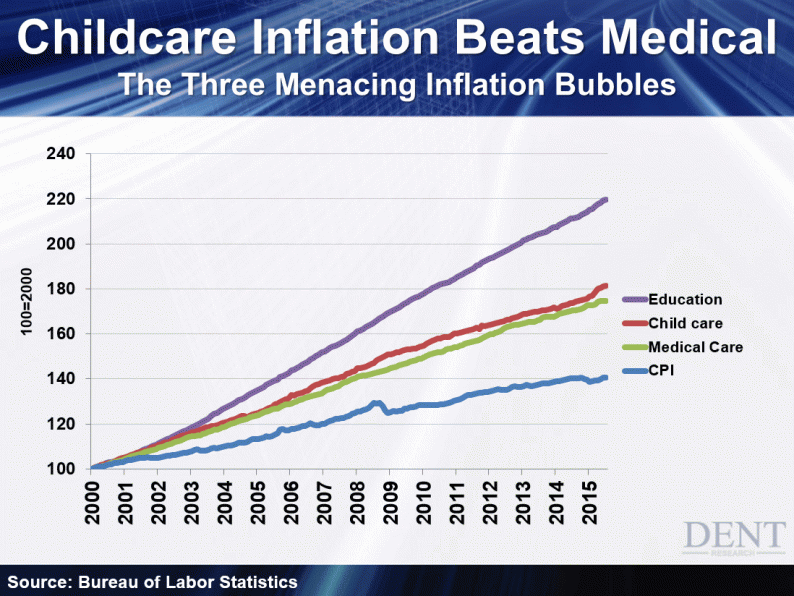It’s not enough that jobs are less stable, or that the ones we’re adding are increasingly more part-time…
It’s not enough that rapidly growing student loan costs are plaguing more young echo boomers and millennials…
It’s not enough that the high costs of education are increasing the inequality gap and making upward mobility impossible…
Or that, even after the last crash, housing is still expensive and loans are harder to get…
Today, the young generation ALSO has to deal with runaway childcare costs. It’s no wonder many of them aren’t having kids.
But I believe much of this will change in the great deleveraging we see ahead. When this bubble bursts, it will bring many of our “inflated” economic realities – in this case, the ones that affect the majority of our consumer population – to center stage.
This is something important to remember. When it comes to education, health care, even child care to an extent – they’re all service industries. But these service industries rely on higher-than-average skills. They’re not hotel clerks. They’re not servers. For that reason and many others, they’re subject to heavy special interests and lobbying, and scarcer skills. And that’s one of the reasons all this stuff is so expensive.
But these trends simply cannot continue without financially killing most families.
Let’s use the consumer price index (CPI) as our benchmark. It’s up 41% since the beginning of 2000, an average gain of 2.6% each year.
Medical care is up substantially higher at 75%, or 4.8% per year.
Educations costs are off their rocker – 120%, or 7.6% annually.
But more surprising to me, childcare has now surpassed medical care at 82%, or 5.2% per year. Take a look:

How are young families supposed to have kids? How are we supposed to keep our populations stable?
We need 2.1 kids per family just to be even. But inflation of this magnitude is crushing millennials and even young echo boomers before they can even get off their feet financially.













Leave A Comment